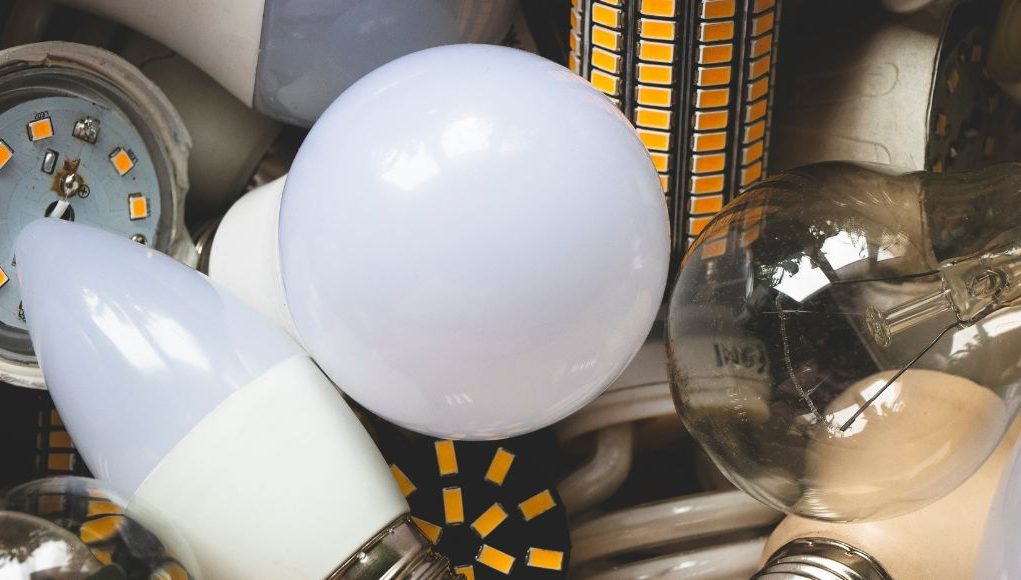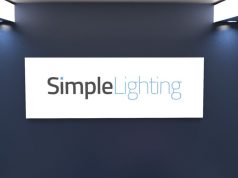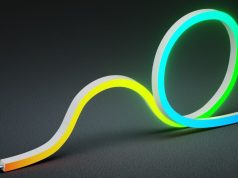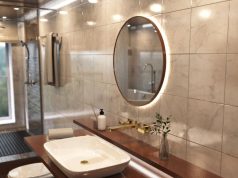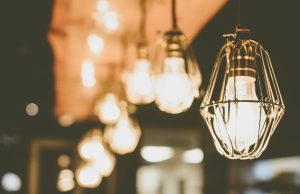Since its conception, LED lights have continuously progressed, breaking norms and transcending beyond their predecessors. Many have heard of it and utilised it in their homes, businesses and facilities. However, have you ever stepped back to look at the beginning of LED lighting? What are LEDs and their history, and what are their different types?
LED Light: What is it?
LED stands for “light emitting diode”. It’s a semiconductor gadget that converts electricity into light. This LED chip is then encased inside a lamp/fixture, becoming the LED light bulb you use in your home, shop, office, and others.
LED lighting is somewhat new on the market. LED light panels, LED strip lights, and LED downlights are considered relatively young in the lighting industry. Basic LED lighting was invented in the 1960s, about 100 years after the development of the incandescent bulb. However, it wasn’t until the 90s that LED lighting became widely recognised for its illuminating abilities. Its lifespan, efficiency, and versatility are outstandingly better than traditional artificial lighting like fluorescent and incandescent.
Different Types of LED Light Bulbs?
Before, LED light bulbs were not always available in the same form as traditional bulbs. However, this has significantly changed over time! Now, you can get LED bulbs in different shapes, sizes, colours, and bases, allowing you to find a fitting that suits your requirements. To make it easier for you to get what you need, here are the different LED light bulbs you can find!
E27 (Edison Screw)
The most common LED light bulb, and the one that you most likely have in your home, is the E27 bulb. Also known as the Edison Screw of ES, this bulb is widely used in the UK and through the Atlantic in the US. It has a screw base measuring 27mm, similar to an incandescent or halogen E27.
E14 (Edison Small Screw)
The E14 LED bulb has the same screw base as an E27 light bulb. However, it’s smaller, measuring just 14mm in diameter. It’s suitable for small light fixtures used as decorations, chandeliers, and appliances!
B22 (Bayonet)
Another famous LED light bulb in the West is the B22 bulb or Bayonet fitting. It has a 22mm diameter and is typically seen in lampshades.
B15 (Small Bayonet)
B15 is the smaller version of the B22 light bulb. It only has a 15mm diameter, perfect for smaller lamp holders.
R50
R50 light bulbs, also known as reflector bulb, features a screw base similar to an E14 bulb. The only difference between the two is the flatter top of the bulb to accommodate other light fixtures and applications.
R63
The R63 is a reflector bulb with an E27 screw base and a protruding bulb cap. It’s made to cater to light fixtures that require such a design.
PAR38
The PAR38 LED light bulb contains a massive amount of lumens and is ideal for areas where absolute brightness is necessary. It has a screw base and is primarily found in security, workshops and commercial lighting.
LED Smart Bulbs
LEDs are constantly evolving and getting smarter as the days pass. Now, you can install Smart bulbs in your home, office, or store! These fittings are remarkably convenient and versatile, giving you multiple control options, including through your smartphone or voice command! Some Smart LED bulbs can produce millions of colours and traverse through different brightness levels. It’s the future of lighting, so if you haven’t gotten one, you better start considering the idea!
Different Types of LED Spotlight Fittings
Modern houses typically employ the help of LED spotlight fittings to brighten the space and eliminate dark areas. They can be used to highlight prominent features of your home or decorative pieces that you want to stand out. LED spotlights are practical because, on top of their energy efficiency, you get to choose how wide the beams of your lights will be. In case you’re interested in incorporating LED spotlights in your space, here are the different types.
GU10
GU10 is the most popular among all the other types of LED spotlight fittings. Some are dimmable and perfect anywhere in your home where extra focus is necessary. Similar to the less efficient halogen bulbs, an LED GU10 has two pins at the base with a distance of 10mm.
MR16
Another typical household spotlight but not as convenient as a GU10 is the MR16. It has two pins at the base but is slenderer, unlike a GU10. Before you fit an LED MR16 to your existing MR16 halogen transformer, it’s best to note that you may have to replace it with an LED-compatible transformer because the load requirement is different. If you don’t, you’ll risk damaging your lights.
G9
Compared to the others, an LED G9 is a lot smaller and is typically used for electronics and appliances. They have a dimmer glow, often producing a maximum of 300 lumens only.
G4
Like G9s, G4s are generally seen in smaller lighting fixtures and appliances. Similar to an MR16, a G4 may need a particular LED-compatible transformer if you’re using it to replace a halogen fitting.
LED Filament Bulbs: Why Designers Like Them?
With the industrial aesthetic sweeping off the feet of the design industry, it’s no wonder that bulbs are becoming a hit. But not just any type of bulb; filament bulbs are the latest trend! Traditionally, older fluorescent light bulbs use filaments to produce light. However, it consumes too much energy, have a shorter lifespan and tend to emit so much heat, making them the least favourite in terms of practicality.
Fortunately, manufacturers were able to fuse the classic and authentic design of a filament bulb with the modern technology of LEDs, giving you the best of both worlds! Now, you can enjoy the nostalgic appeal of a filament bulb without sacrificing efficiency and durability.
LED light bulbs have come a long way since they were discovered. It became a game-changer in the lighting industry, producing outstanding brilliance with exceptional efficiency. If you’re looking for high-quality LED light bulbs, you can visit our website, Simple Lighting! We have an extensive collection of not just LED bulbs but other lighting solutions as well.
Are LED light bulbs energy-efficient?
- 4 Pack – 4w LED Candle Bulbs 6000K Cool White E14
- 4 x 10w LED Bulbs, E27 Screw – Daylight/Cool White
- 4 Pack – 5.5w LED Candle Bulbs, Bayonet B22 – Cool White
Yes. LED light bulbs are energy-efficient. In fact, they are one of the most efficient lighting solutions that you can find! When you compare the power consumption of an LED light fixture versus that of a traditional light bulb, you’ll notice a significant disparity.
Say you are looking for a 250 – 400 lumens light bulb. An LED bulb with that luminance will only require about 2w – 4w of power, whereas a halogen bulb will need 18w of power. See how much a traditional lamp will cost you versus an LED bulb. If you’re trying to lower your electrical charges, begin by swapping your old fixtures with LEDs!
How long do LED lights last?
Besides their energy efficiency, LED lights are one of the highest-ranking lighting solutions because of their extensive lifespan. How long can they last? LED light bulbs can last for an average of 25,000 hours to 50,000 hours, depending on their usage.
An incandescent light can only last for 1,000 hours, so if you’re going to decide, which do you think is worth your money?


